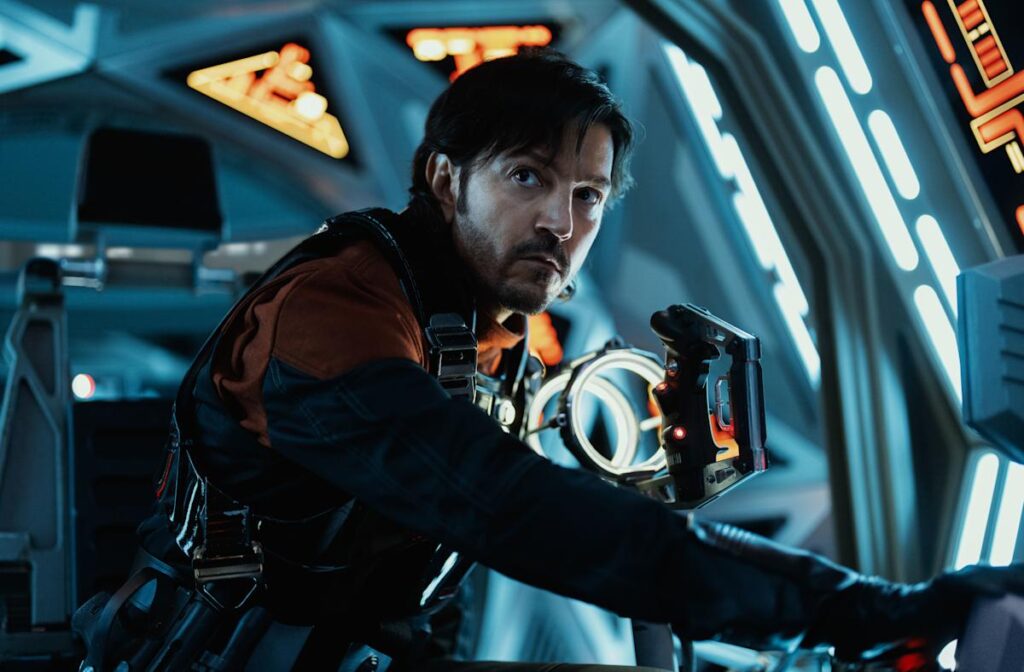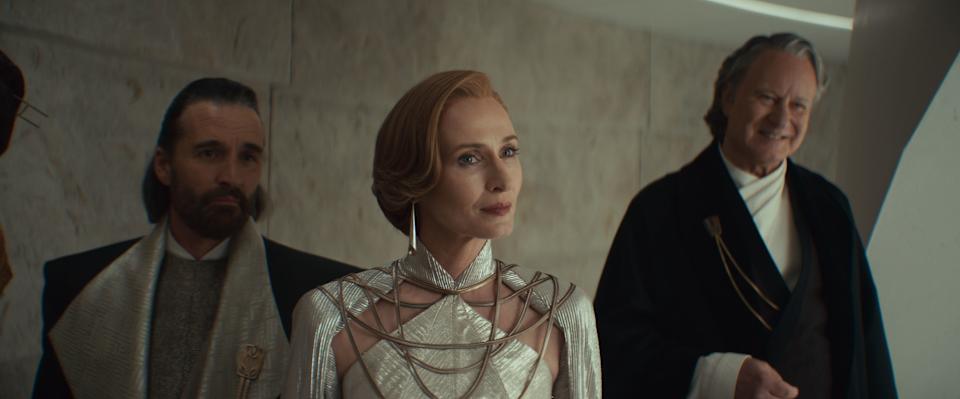
Star Wars Rebellion Theme: How Andor Season 2 Deepens the Franchise's Revolutionary Spirit
Star Wars Rebellion Theme: How Andor Season 2 Deepens the Franchise’s Revolutionary Spirit
Andor season 2 offers the most nuanced portrayal of the Star Wars rebellion theme to date. Image: Lucasfilm Ltd™
The Star Wars rebellion theme has been a cornerstone of the franchise since its inception, but never has it been explored with such depth and nuance as in the second and final season of “Andor.” Created by Tony Gilroy, this prequel series follows Cassian Andor’s journey from self-interested criminal to committed rebel spy, culminating in the events of “Rogue One.” What distinguishes this series is how it reimagines the Star Wars rebellion theme through the lens of ordinary people making small but significant choices to resist an oppressive regime.
Table of Contents
Rebellion Through Ordinary People
Unlike other Star Wars stories, Andor’s approach to the Star Wars rebellion theme centers on how resistance movements begin not with grand heroes wielding supernatural powers, but with common individuals making crucial decisions under extreme pressure. This grounded perspective offers viewers a more relatable entry point into understanding resistance against tyranny.

Andor’s treatment of the Star Wars rebellion theme focuses on ordinary citizens rather than Jedi heroes. Image: Lucasfilm Ltd™
Season two builds on this foundation, following Andor and his friend Bix as they navigate deeper involvement with the early rebellion. Both characters carry the psychological weight of their choices, with Bix still recovering from torture at the hands of the Empire. Through their experiences, the Star Wars rebellion theme is portrayed not as romantic adventure but as a difficult, often painful necessity.
Key Elements of Andor’s Rebellion Narrative
- Personal Cost: Characters face genuine consequences for their resistance
- Incremental Progress: Rebellion builds through small acts rather than grand victories
- Moral Ambiguity: Characters must make difficult ethical choices to fight tyranny
- Everyday Heroes: Focus on ordinary people rather than destined champions
- Systemic Perspective: Shows how Empire affects entire populations, not just individual heroes
This approach to the Star Wars rebellion theme manifests in subtle moments, such as when a hotel bellhop reveals his true thoughts about the Empire to Andor. These seemingly minor interactions illustrate how resistance ferments in everyday settings before erupting into organized rebellion. Such narrative choices allow viewers to contemplate how resistance movements form in response to systemic oppression.
Political Resonance of Andor’s Resistance Narrative
The Star Wars rebellion theme has always carried political undertones, but Andor applies these with greater directness and sophistication. The series examines how fascist regimes maintain power not just through military might but through bureaucratic systems and everyday compliance that gradually normalize oppression.
The Empire has been choking us so slowly, we’re starting not to notice. The time has come to force their hand.
When Luthen continues by stating, “If you’re not willing to risk your conscience, then surrender and be done with it,” he articulates a central theme of the series: rebellion often requires moral compromise. This nuanced treatment of the Star Wars rebellion theme acknowledges that fighting tyranny can dirty one’s hands, raising questions about what costs are acceptable in pursuit of freedom.
The Ghorman Massacre
Season two incorporates the Ghorman Massacre—a canonical event where the Empire kills thousands of civilians—as a pivotal moment that convinces Mon Mothma and other leaders that violent rebellion is necessary. This event serves as a crucial turning point in developing the Star Wars rebellion theme, showing how extreme imperial brutality leaves peaceful resistance as an insufficient response.
By depicting how authoritarian violence escalates and necessitates stronger resistance, Andor presents the Star Wars rebellion theme as a response to fascism rather than an idealistic crusade. This framing carries obvious contemporary relevance while remaining rooted in the Star Wars universe’s established mythology.
Character Journeys and Moral Complexity
The Star Wars rebellion theme gains emotional resonance through complex character development, particularly through three key figures who embody different facets of resistance: Cassian Andor, Mon Mothma, and Luthen Rael.

A reluctant revolutionary whose personal trauma gradually transforms into political commitment. His journey from self-preservation to self-sacrifice represents the Star Wars rebellion theme at its most intimate level—showing how personal grievance can evolve into principled resistance.

The public face of political resistance who struggles with the violent measures deemed necessary by operatives like Luthen. Her evolution from advocating peaceful reform to accepting armed resistance illuminates the Star Wars rebellion theme from the perspective of legitimate political opposition.

The architect of violent resistance who has already sacrificed his soul to the cause. Through Luthen, the Star Wars rebellion theme explores the psychological toll of long-term commitment to revolutionary action and raises questions about whether freedom fighters can become as ruthless as their oppressors.
By examining rebellion through these distinct perspectives, Andor creates a multifaceted portrayal of the Star Wars rebellion theme that acknowledges its moral complexity. This approach stands in stark contrast to the often simplistic “good versus evil” framing found in other Star Wars properties.
How Andor Contrasts with Traditional Star Wars
Andor represents a significant departure in how the Star Wars rebellion theme is typically portrayed within the franchise. While the original films and most subsequent media focus on spectacular space battles and lightsaber duels, Andor deliberately eschews these elements to explore rebellion through more realistic political and social dynamics.

Andor presents a grittier, more grounded version of the Star Wars rebellion theme than typical franchise entries. Image: Lucasfilm Ltd™
| Traditional Star Wars | Andor’s Approach |
|---|---|
| Focuses on Jedi and Force-wielders as primary agents of change | Centers ordinary people with no special powers or destiny |
| Rebellion portrayed primarily through military victories | Rebellion shown as political organizing, sabotage, and information networks |
| Clear moral divisions between Light and Dark sides | Morally complex situations with difficult ethical choices |
| Fast-paced action driving the narrative | Deliberate pacing allowing for character development and political themes |
| Mystical elements central to the storytelling | No Force powers or lightsabers; focuses on political realism |
This deliberate deviation from franchise norms allows Andor to explore the Star Wars rebellion theme with greater maturity and subtlety. Creator Tony Gilroy, who previously helped rescue “Rogue One” during production difficulties, brings his experience from political thrillers like the Bourne series to craft a more sophisticated narrative about resistance movements.
Why This Approach Works
By stripping away the familiar trappings of Star Wars, Andor paradoxically creates one of the most faithful interpretations of the Star Wars rebellion theme. The original 1977 film was itself influenced by real-world resistance movements and fascist regimes. Andor returns to these political roots while utilizing the expanded storytelling canvas of prestige television.
Cultural Relevance and Lasting Impact
The exploration of the Star Wars rebellion theme in Andor resonates powerfully with contemporary audiences living in politically turbulent times. By detailing how ordinary citizens respond to creeping authoritarianism, the series provides a framework for understanding resistance that extends beyond its fictional setting.

Andor’s treatment of the Star Wars rebellion theme offers parallels to contemporary political movements. Image: Lucasfilm Ltd™
While other recent Star Wars productions have struggled to find lasting cultural impact or critical acclaim, Andor’s sophisticated treatment of the Star Wars rebellion theme seems likely to ensure its longer-term significance. Its nuanced political commentary provides substance beyond spectacle, offering viewers meaningful content to contemplate after the credits roll.
Why Andor Will Outlast Other Star Wars Media
- Thematic Depth: Explores complex ideas rather than relying on fan service and nostalgia
- Character Development: Creates fully realized characters with genuine internal conflicts
- Political Relevance: Addresses timeless questions about power, resistance, and moral compromise
- Artistic Integrity: Prioritizes storytelling quality over franchise expansion
- Adult Perspective: Respects viewers’ intelligence rather than targeting primarily younger audiences
Despite being a prequel with predetermined outcomes—we know from “Rogue One” that Cassian Andor will eventually sacrifice himself—the series creates genuine narrative tension through its exploration of how individuals evolve into revolutionaries. This focus on the journey rather than the destination elevates the Star Wars rebellion theme beyond simple good-versus-evil dynamics.
As Andor concludes with its second season, it leaves behind a significant legacy in how thoughtfully it has developed the Star Wars rebellion theme. By showing that resistance begins not with dramatic battles but with simple choices by ordinary people to stand against injustice, it provides both a compelling story and a reflection on how real-world social movements form and function.
For a franchise so commercially driven as Star Wars has become under Disney’s ownership, Andor represents a rare creative triumph—proof that meaningful storytelling can still emerge even within the constraints of a major entertainment conglomerate. Its nuanced portrayal of the Star Wars rebellion theme serves as a reminder that at its best, science fiction can illuminate our own world while transporting us to galaxies far, far away.





